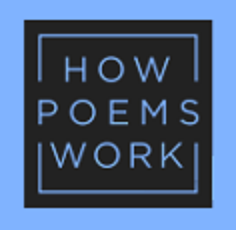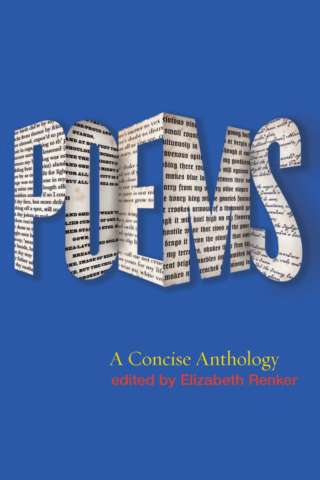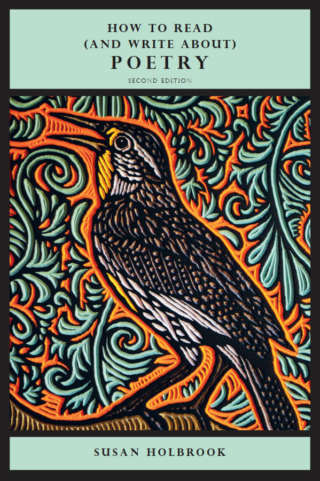Users please note: After you have purchased access to How Poems Work, you can log into the site using the same username and password you used when purchasing this product.
This is an online resource to be used in the teaching of poetry. It may be used on its own, in conjunction with a Broadview anthology, or with any other Broadview book. (Access cards for the site may be packaged with bound books at a specially reduced price.) The How Poems Work website provides a wide-ranging, engaging resource for the study of poetry. Materials available through the site include the following:
- – an extensive set of interactive exercises designed to help readers understand the workings of poetic meter
- – a sound archive providing samples of poems from other eras spoken as they would have been in the English of their time
- – a glossary of literary terms
- – case studies of individual poems
- – a selection of new commentaries by contemporary poets on how poems work
- – several introductions to poetry, approaching the genre from a variety of perspectives
Access to the site may be purchased directly through this page. Instructors may also choose to shrinkwrap a How Poems Work coupon code with any Broadview title for just $4.95 more than the cost of a copy of the bound book. Titles particularly well-suited to such packages include Poems: A Concise Anthology, The Broadview Introduction to Literature: Poetry, The Broadview Anthology of Poetry 1e, The Broadview Anthology of Poetry 2e, and How to Read (and Write About) Poetry. Please contact your Broadview representative or Customer Service (705-743-8990) to obtain a package ISBN or more information.
The How Poems Work website has been developed collaboratively. Among those who have contributed substantially to the material on the site are Jerry Farber of the University of San Diego (who created many of the exercises on prosody); and Laura Buzzard, Don LePan, Erich Mulhall and Nora Ruddock of Broadview Press. The glossary draws on the glossary prepared by Herbert Rosengarten and Amanda Goldrick-Jones for their Broadview Anthology of Poetry, as well as on the material included in The Broadview Pocket Glossary of Literary Terms. The first of several introductions to poetry that are provided on the site has been adapted from the introduction to poetry that appears in The Broadview Introduction to Literature, edited by Lisa Chaykoff, Neta Gordon, and Paul Lumsden. A number of poets have written commentaries commissioned especially for the site; their names appear below under “Poets on Poetry.”
Comments
“I applaud the care with which [Broadview’s How Poems Work site] has broken down what a newcomer to scansion needs to know, to include matters as elementary (yet essential) as syllable recognition and accent…. The choice of lines and poems throughout the site seems to me rich and apt.” —Herbert Tucker, John C. Coleman Professor of English, University of Virginia, and author of For Better for Verse: An Interactive Prosody Tutorial
“Succinct, useful, and practical. Part reference work, part interactive tutorial, this website offers something for all students of poetry, from beginners to experts. Lyric poetry communicates to us through sound, emotion, and logic. Most poetry instruction focuses on logic and emotion, but rarely on sound, which is as important as any other part of a poem. With How Poems Work, students will learn how to “hear” the meaning of a poem as they read it. The website teaches students how to define and recognize all aspects of prosody from simple iambs to complex rhythms. Students can then synthesize prosody insights with other methods for reading poetry, resulting in more substantial and holistic readings of individual poems.” — Dutton Kearney, Hillsdale College
“I really like the website, particularly the Interactive Exercises in the ‘Understanding Poetic Meter’ section. I was never taught how to scan a poem as an undergraduate English major, and, therefore, have had to develop my skills on my own. How I wish I had had the exercises on the How Poems Work website as I learned how to scan, and what a wonderful resource for my students. Since some students are exhausted by the vagaries of ‘interpreting’ a poem, appreciating meter and rhythm can be a new and exciting way for them to enjoy poetry. The website’s Interactive Exercises offer concrete practice, step by step, in scansion skills that can be very difficult to teach to large groups of students. I plan to assign the exercises (and accompanying explanatory essays) as homework, and to reinforce key points by applying them to our assigned readings from Poems: A Concise Anthology.” — Susan Levasseur, Bridgewater State University
The material on this website is protected by copyright and is available exclusively to those who have been provided access by Broadview Press. Broadview Press has cleared copyright (and paid the associated permissions fees) for material posted on this site. Those permissions, however, are often granted for a limited term or are otherwise restricted; we are thus unable to guarantee permanent access either to specific selections or to the site as a whole.




